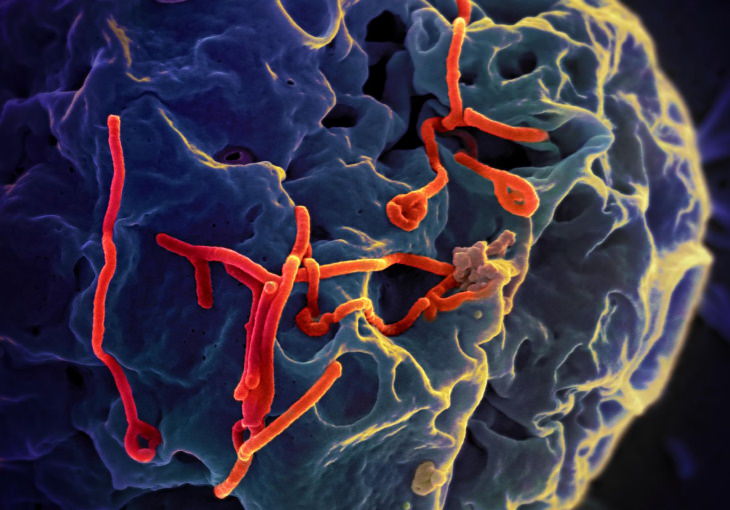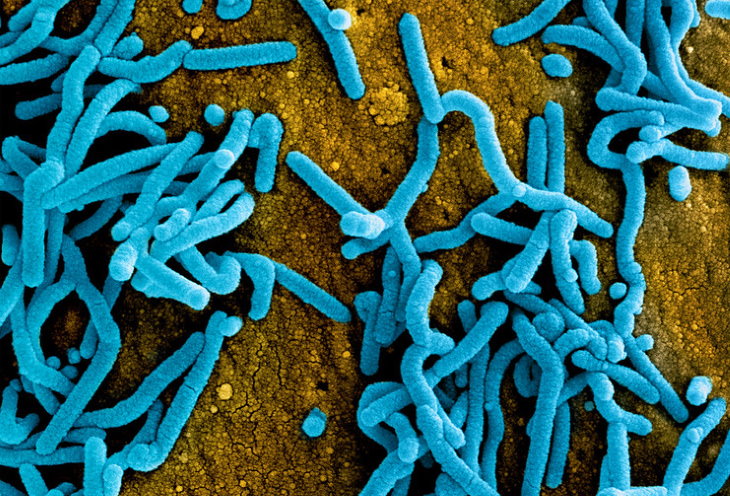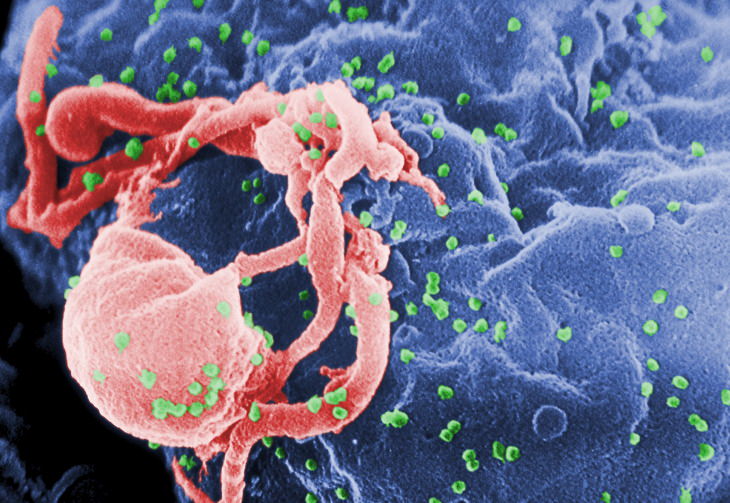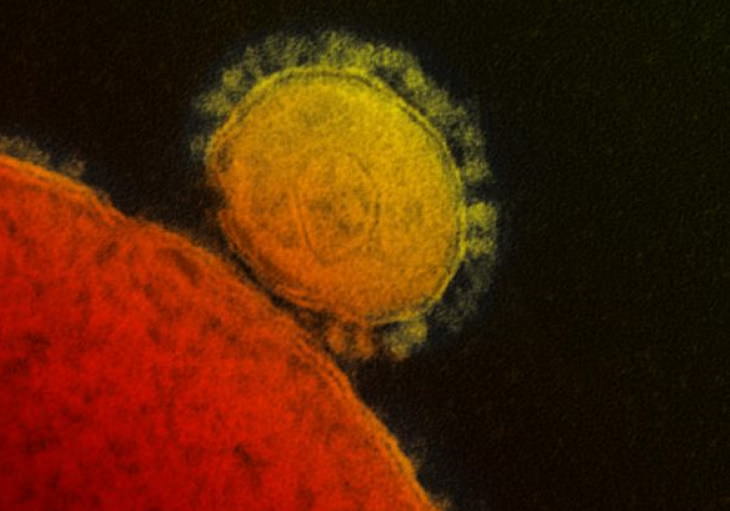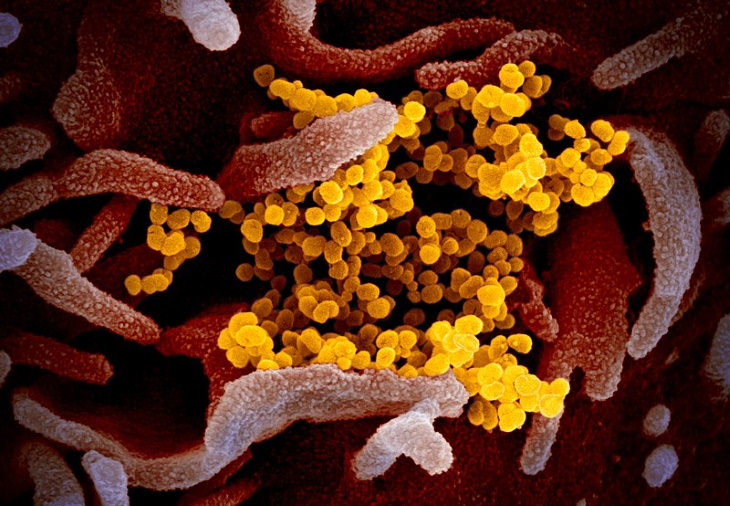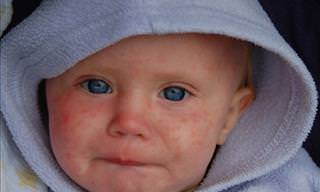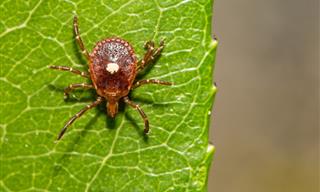Over 200 species of viruses have chosen the human body as its host, and many of these viruses have caused incredible harm and devastation to humanity throughout its evolutionary history. Humans have learned to fight some of these deadly viruses and even managed to eradicate some of them, like the virus that causes smallpox, by creating vaccines and controlling the spread of the virus. The fight against other viruses has been less successful, be it because they are too new for us to develop a vaccine (like is the case with the SARS-CoV-2 virus that continues to wreak havoc worldwide) or for other reasons.
The 12 viruses we discuss in this article are among the deadliest and most dangerous in human history.
1. Ebola
Many people don’t know this, but Ebola refers to a whole group of six different viruses. First discovered in Sudan and the Democratic Republic of Congo in 1976, a viral Ebola infection causes a high fever and hemorrhages that can often be fatal. Ebola is spread through contact with body fluids, such as blood, from people or animals.
Though not all Ebolaviruses are dangerous to humans (the Ebola Reston species only affects other primates, but not humans), those that do are often deadly. The most dangerous strain is the Zaire ebolavirus, which kills 90% of the people it infects. This is the strain that caused the 2014-2016 Ebola outbreak - the largest one to date - that swept across West African countries and managed to spread, though relatively insignificantly, to Europe and North America, killing 11,323 people.
2. Marburg Virus
The Marburg virus was first discovered in 1967 when lab workers in Marburg, Germany were exposed to monkeys imported from Uganda that were infected by the disease and caught the virus. Like Ebola, the Marburg virus is spread through bodily fluids and causes hemorrhagic fever, but it’s significantly more difficult to treat than Ebola, which is why it is considered extremely dangerous.
After its discovery, the virus caused outbreaks in 1998-2000 in the Democratic Republic of Congo and in 2005 in Angola that had a devastating 80% mortality rate or higher. Luckily, this virus hasn’t caused any major outbreaks as of 2020.
3. Human Immunodeficiency Virus (HIV)
Possibly the biggest viral plight of the modern world is the Human Immunodeficiency Virus (HIV) which causes HIV/AIDS, a complex condition that attacks the immune system and manifests itself in a variety of symptoms. The disease was first observed in 1981 in the United States, but a similar clinical case to AIDS had been described in Norway as early as 1966 and in Congo in the 1950s. Since then, it has been estimated that HIV has killed 32 million people, which makes it the most deadly virus in the modern world.
Today, there are a number of antiviral treatments that extend the life of AIDS patients by years, but there is still no vaccine because the virus evolves too fast and has the capability to go undetected by the immune system. Despite the availability of treatments and widespread education about the virus, it continues to spread, especially in developing countries. According to WHO, nearly 1 in 25 adults in Africa is HIV-positive.
4. Dengue
Dengue virus first appeared in Thailand and the Philippines in the 1950s, but it managed to spread to most tropical and subtropical regions of the globe today. The mosquito-borne disease is one of the worst in these regions these days, infecting 390 million people each year, according to current estimates, with an increasing number of patients being asymptomatic. About 40% of the world's population lives in areas where dengue is common.
The virus can manifest itself in Ebola-like symptoms in about 2.5% of patients, causing fever and bleeding, which leads to organ failure and death in 20% of cases if left untreated. With an increasing number of the world population being exposed to the virus, Dengue is becoming an increasing threat to humans.
In 2019, the US FDA approved a vaccine for the virus, which can be used in children 9-16 years old, and similar vaccines are available in other countries in the age range of 9-45. The problem with this vaccine is that only those who have contracted dengue in the past can get the vaccine, as others can actually develop a severe case of the disease after being vaccinated due to the extreme pathogenicity of the virus.
5. Rabies
Although the Rabies virus has become less and less common ever since pets have been routinely vaccinated against it since the early 20th century, it still exists and occasional outbreaks occur around the world, mostly brought by wild animals who have contracted the disease. You can get rabies after being bitten by an animal who has the disease. Rabies is a truly terrible disease and one that has a nearly 100% mortality rate if left untreated or treated too late. Thousands of rabies-related human deaths still occur every year, especially in Africa and Asia.
The virus infects the nervous system and destroys the brain, but before that, the patient exhibits uncontrollable violent urges, an inability to move the limbs, and a fear of light and water, among others. When these symptoms occur, it’s too late to administer a vaccine, but early treatment has been found to be effective at curing the disease.
6. Rotavirus
The Rotavirus was discovered in 1943, but a vaccine for the virus wasn't developed and approved until the 1990s. The virus spreads through the fecal-oral route, not washing your hands after using a public bathroom, for example, and microscopic fecal particles end up in the mouth, causing severe diarrheal illness in babies and young children.
Though the vaccine is effective at preventing 80-100% of the disease, the virus still kills an estimated 215,000 kids below the age of 5 worldwide according to a 2013 report. The majority of the deaths occur in developing countries where effective rehydration treatments and vaccines are unavailable to most people.
7. The Influenza Virus

The Influenza virus needs no introduction, and we are all familiar with flu symptoms since most of us have experienced it first-hand several times throughout our lives. The virus is likely thousands of years old, with the Greek doctor, Hippocrates, describing the symptoms of what sounds like the flu in 2,400 BC. What most people aren't quite aware of is that a typical flu season claims the lives of 500,000 people worldwide every year.
Naturally, once in a while, a new, particularly bad strain of the virus emerges, and in cases like these, the flu season can develop into a full-blown pandemic, which results in much higher mortality rates. We have seen this happen several times in human history, with the worst known and deadliest flu occurring between 1918-1920, widely known as the Spanish Flu. This devastating pandemic made more than a third of the world population sick and it killed between 50-100 million people.
Luckily, flu vaccines are widely available every season these days, which has greatly decreased both the severity and recurrence of flu throughout the world.
8. Smallpox

Have you heard of smallpox? Many people today haven't, and it's not surprising since the virus causing this truly terrifying disease had been successfully eradicated worldwide in 1980, which was one of the greatest medical accomplishments of the 20th century. Just imagine, for millennia, smallpox was one of the greatest health threats worldwide, killing every third person who caught the virus, and now it's completely gone.
Smallpox was caused by two strains of the Variola virus, and evidence of the disease goes back to Ancient Egyptian times. One could get the disease by touching contaminated objects or through contact with sick people. A person who contracted the disease developed a fever and a multitude of pus-filled bumps throughout the body. Those who survived the horrific disease were often made blind and had permanent scars all over their bodies, reminding them of the disease. In the 20th century alone, it has been estimated that smallpox killed 300 million people worldwide.
9. Hantavirus

Hantaviruses capable of infecting humans were first discovered in 1993 when a healthy Navajo man and his fiancee suddenly died within days in the Four Corners region of the USA. The only symptom they have developed was shortness of breath, which later turned out to be the result of the Hantavirus pulmonary syndrome (HPS), a disease caused by a virus transmitted by deer mice. Though most Hantaviruses only infect mice, several strains have evolved to spread to humans, causing a wide range of possible symptoms depending on the type of the virus.
The virus can spread when one comes in contact with rodent urine, saliva, or feces, and it has now been found in all continents apart from Australia. In the US alone, 600 people are known to have contracted HPS, with the disease ending in fatalities in around 36% of cases. The virus is becoming an increasing threat to humans, especially for those who live in rural areas and work in agriculture or cattle farming and have a higher risk of encountering deer mice or their droppings.
10. SARS-CoV
The first SARS coronavirus epidemic started in 2002, when patients in the Guangdong province of southern China started exhibiting severe respiratory symptoms. Scientists believe that the virus originated in bats, and then evolved to infect civets and later humans. From China, SARS spread to 26 other countries, causing 770 deaths and infecting around 8,000. A vaccine to prevent the disease was never developed since no cases of SARS appeared following the initial outbreak.
11. MERS-CoV
Another coronavirus variety, MERS, or Middle East respiratory syndrome, swept through Saudi Arabia in 2012 and South Korea in 2015. Like SARS, MERS likely jumped to humans from bats, but it is known to infect other animals, like camels as well. Like all coronaviruses, it caused fever, a dry coughing, shortness of breath, and pneumonia in infected patients. MERS is the most lethal of all the coronaviruses - killing 30-40% of its victims. Like SARS, this virus has no vaccine or approved treatment.
12. SARS-CoV2
Like SARS and MERS, SARS-CoV2 is a coronavirus, and it, too, most likely originated in bats and evolved to infect other mammals before evolving to infect humans. The virus was first identified in December 2019 in the city of Wuhan in China.
Since then, it has infected more than 4 million people worldwide, more than any other coronavirus, and the numbers continue to climb higher day by day. The virus has killed nearly 300,000 people worldwide, and scientists estimate that COVID-19 has a 2.3% mortality rate.
SARS-CoV2 causes similar symptoms to other coronaviruses and can be transmitted through infected water droplets in the air or contaminated surfaces. The ongoing outbreak has been officially called a global pandemic earlier in 2020, and the virus has caused mass quarantines and other movement restrictions worldwide, affecting the lives of people worldwide. No vaccine or official treatment of the virus exists as of May 2020.
 Go to BabaMail
Go to BabaMail



